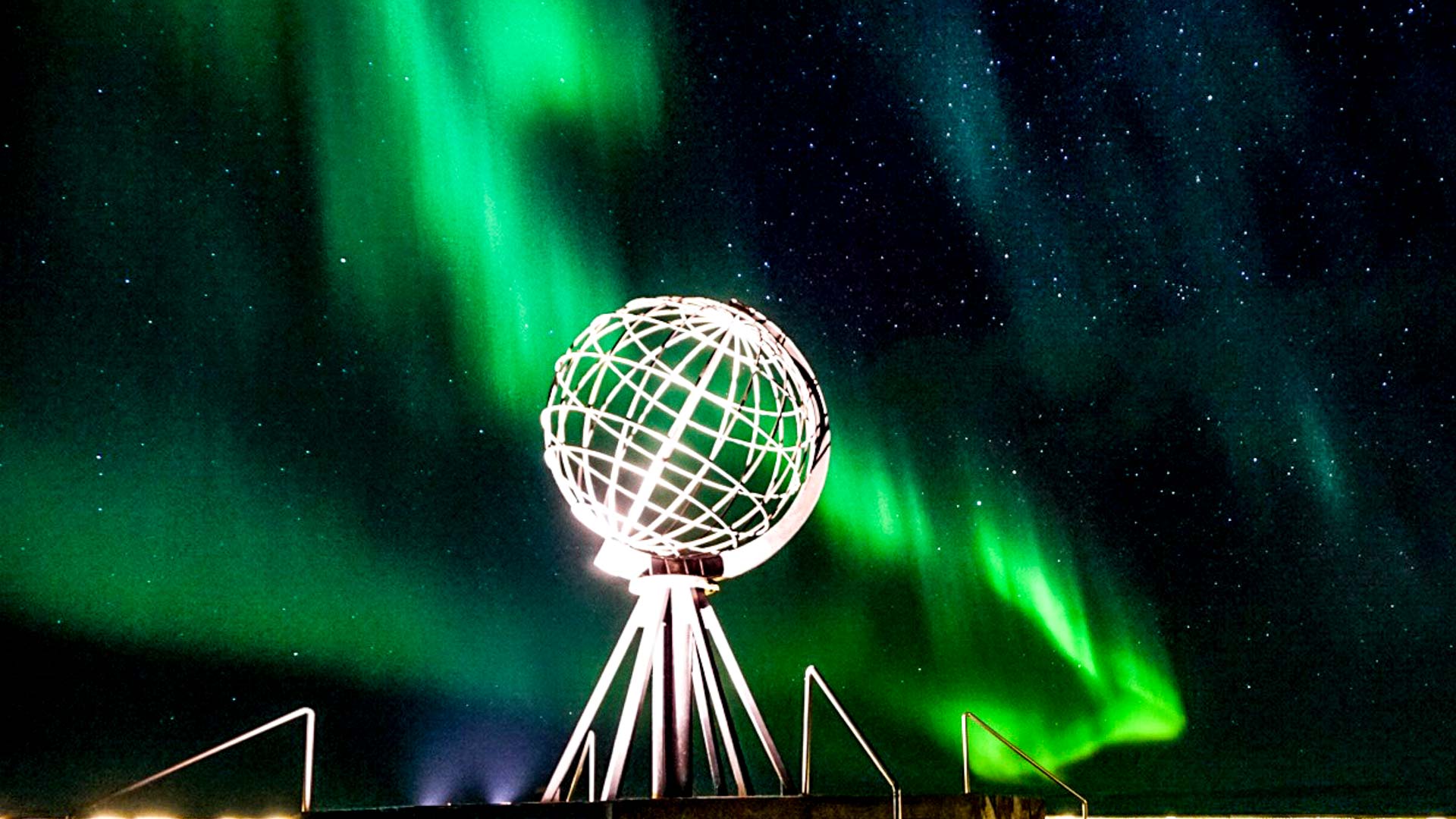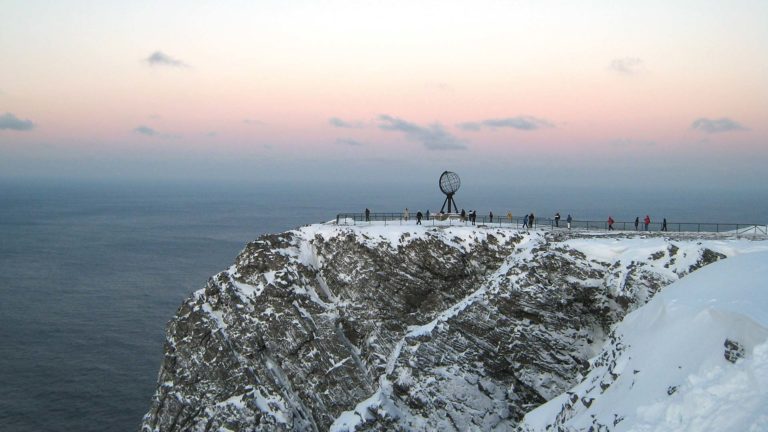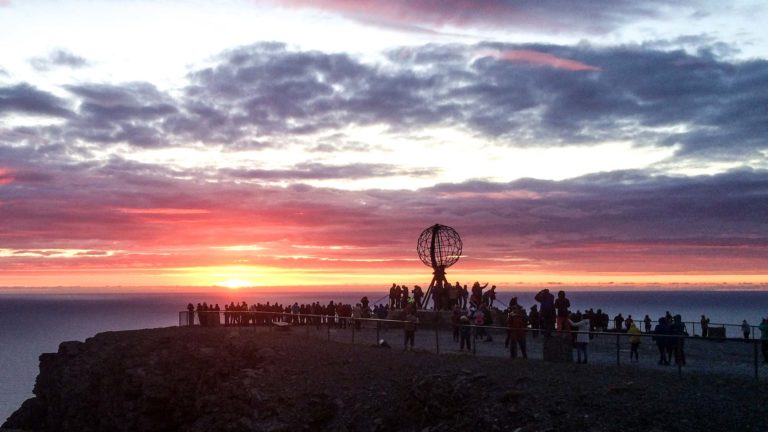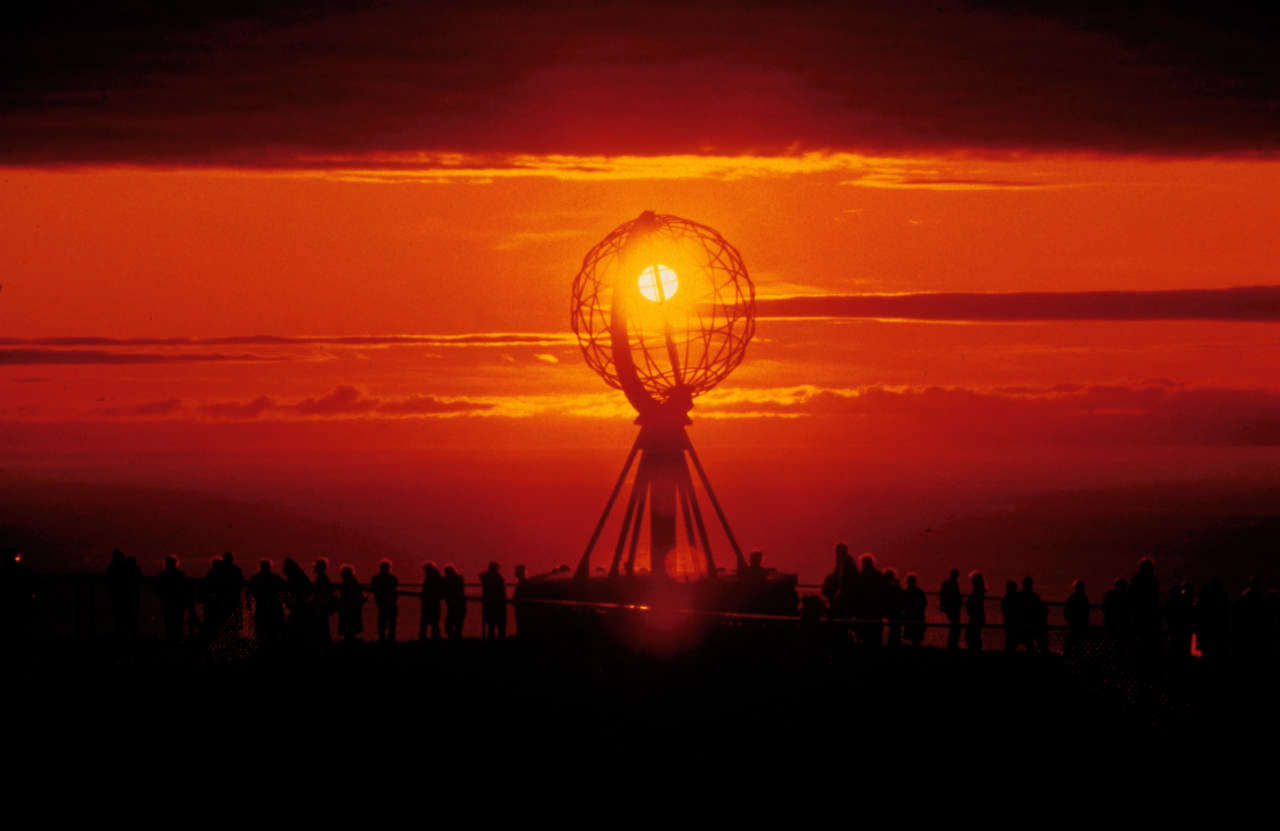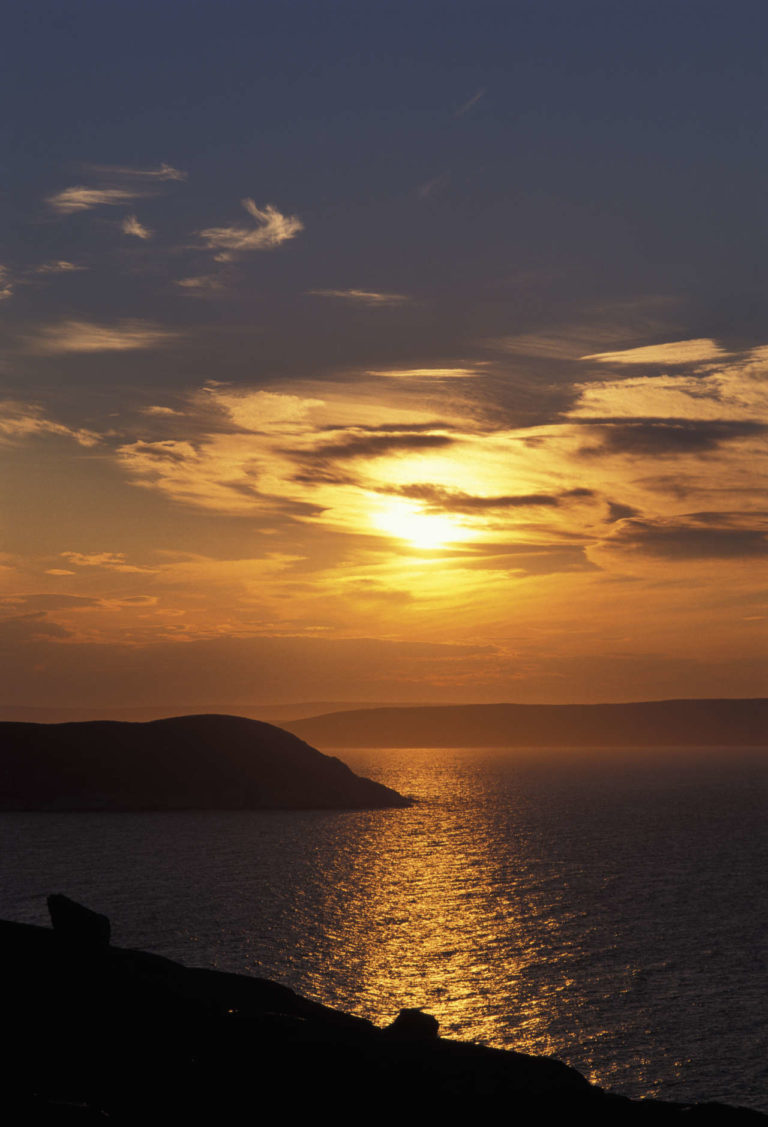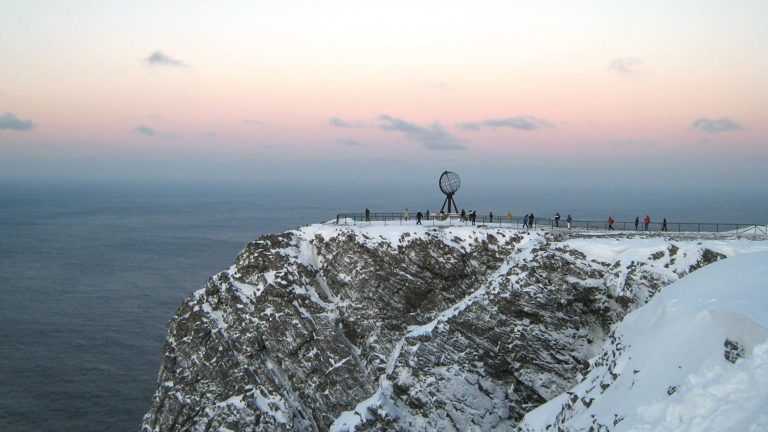In the same way as points such as the Cape of Good Hope and Cape Horn, the North Cape is a place that every authentic traveller simply has to visit. The outermost reach of Europe marks a celebratory finish to any journey to the north.
The most northerly point in EuropeThe North Cape, around 71 degrees north and approximately 2,000 km from the North Pole, is located on Magerøya at the very end of the European landmass. The plateau itself rises 307 metres almost straight up from the Arctic Sea, but it is flat at the top. A little way down the mountain slope stands the rock formation known as the “North Cape Horn”, which is an ancient Sami site of sacrifice. From the plateau, you can look to the left all the way to Knivskjellodden, which is actually more than 1 km farther north. The North Cape is thus not really the most northerly point, but it is tradition to refer to the North Cape the northernmost outpost of Europe.
The midnight sun shines over Nordkapp for nearly two months
The North Cape is the most northerly point of Norway, and thus enjoys the midnight sun longer than anywhere else in the country – from 14 May until 29 July. However, midnight sunshine is far from guaranteed during this period, as cold and warm currents in the Arctic Sea generate a good deal of fog in the area. This means that it is even more beautiful when the sun hangs high in the sky above a bronze-coloured sea. However, the reason to come here is not to see the sun – but to be able to say that you have stood at the end of the world.
Practical information about Nordkapp
Yes, you can take your own care or rent a car from the airports in Alta or Honningsvåg.
You can fly to Honningsvåg which is the closest airport. From here you can take a car or other transport.
Yes, the Hurtigruten stops for a visit to Nordkapp.
You can visit Nordkapp in the winter period
It is also possible to travel to the North Cape in winter. A bus trip to the North Cape departs daily, and in bad weather it drives behind a snow plough. On the plateau you are at the mercy of the elements, but you can counteract this to a large extent by dressing appropriately. After all, it should not be too comfortable to travel to the end of the world.
North Cape was a landmark as early as 1553
In 1553, the English Captain Richard Chancellor sailed around the North Cape on an expedition searching for the North-East Passage to Asia. When he saw the coastline turning southwards again, he named the impressive, 307-metre-high headland the North Cape. The people who lived in the small fishing villages on Magerøya were unaware of this, however, and continued to use the old name: Knyskanes. Richard Chancellor never found a north-eastern link to China, but he did discover Kvitsjøen and was thus able to open a trading route between Western Europe and Russia.
The first tourists arrived in 1664
The first person who travelled north with a view to reaching the North Cape was the Franciscan minister Francesco Negri, who – after a journey lasting several years – was finally able to look out over the Arctic Sea from the plateau in the winter of 1664. In 1795, Louis Philippe d’Orléans – later to become King Louis XVIII of France – visited the North Cape on his travels to the north. It is said that he left genetic traces among the people of Finnmark … In 1873, however, North Cape tourism received quite a boost when the sprightly young Swedish-Norwegian King Oscar II climbed the 307 metres from Hornvika to the North Cape itself. In 1907, the place was even visited by King Rama V of Siam.
Nordkapp has always been a popular tourist destination
From the end of the 1800s, when British, German and French tourists began to travel all the way up to Northern Norway, the North Cape became a popular “finishing point”. Cruise ships often anchored in Hornvika, and visitors climbed the steep slope to the plateau itself. A small champagne pavilion was built on the plateau in 1892, but was later blown down by the wind. A more permanent stone hall was constructed on the plateau in 1959, and additional buildings have since been added. In 1965, a road to the North Cape was completed, so visitors no longer have to make the climb themselves. Today, the North Cape is visited by more than 200,000 people during a busy summer season, and a few hardy souls are starting to make the trip in winter, too.
Set aside time for your Nordkapp visit to make the most of your stay
Many travellers set aside an evening to visit the North Cape, and the experience can easily become too hectic and even a disappointment if the weather is poor. To make the most of your visit, set aside a little more time to go exploring on Magerøya. The bird-watching safaris from Gjesvær on the west side of Magerøya to Gjesværstappan provide an opportunity to encounter hundreds of thousands of birds: puffins, auks, common guillemots and northern gannets. From Skarsvåg, the most northerly fishing village in the world, you can travel to Kirkeporten (The Church Doorway), which is a natural stone arch through which you can see the North Cape itself. People with plenty of energy will happily walk 8–9 hours to Knivskjellodden and back to see the North Cape from the sea side. After such a trip, you have certainly earned a beer at Nøden, the legendary meeting place in Honningsvåg.
